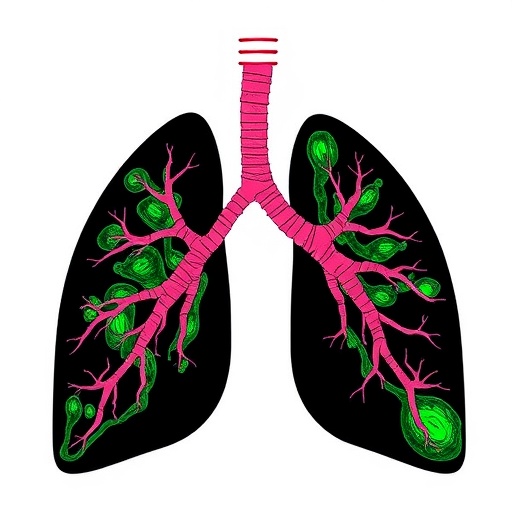In a groundbreaking study poised to redefine our understanding of gaming disorder, researchers have uncovered the intricate pathways through which primary emotions influence gaming addiction tendencies, with attachment patterns playing the pivotal mediating role. As the digital landscape expands and gaming becomes ever more immersive, deciphering the psychological underpinnings of excessive gaming behavior is critical. This latest research sheds new light on how early emotional experiences and interpersonal relationships shape an individual’s vulnerability to problematic gaming.
Central to the study is the concept of primary emotions – fundamental affective states that are deeply rooted in human neurobiology. These emotions, which include fear, anger, sadness, joy, and others, are thought to guide much of human behavior and decision-making from infancy onward. The researchers embarked on an ambitious journey to explore not just direct links between these primal emotional responses and gaming disorder tendencies, but more importantly, how attachment styles forged through early relational experiences intervene in this pathway.
Attachment theory, born from the pioneering work of John Bowlby and Mary Ainsworth, describes how the quality of early bonds between children and caregivers forms the blueprint for future emotional regulation and interpersonal functioning. Secure attachment develops when caregivers are reliably responsive, fostering a sense of safety and trust, whereas insecure attachments result from inconsistency, neglect, or trauma, often leading to maladaptive emotional patterns. The novel insight provided by this study is the revelation that these attachment patterns mediate the way primary emotions translate into problematic gaming propensities.
.adsslot_Dcz9JqkgrU{width:728px !important;height:90px !important;}
@media(max-width:1199px){ .adsslot_Dcz9JqkgrU{width:468px !important;height:60px !important;}
}
@media(max-width:767px){ .adsslot_Dcz9JqkgrU{width:320px !important;height:50px !important;}
}
ADVERTISEMENT
Using sophisticated psychometric tools and large-scale data analytic methods, the research team examined a diverse population of gamers, assessing their dominant emotional dispositions alongside their attachment orientations. They then correlated these variables with established criteria for gaming disorder as outlined by mental health authorities. The findings consistently pointed to a significant mediating effect of attachment styles. In particular, individuals exhibiting anxious or avoidant attachment patterns were significantly more likely to channel intense primary emotions into excessive gaming behaviors.
The researchers interpret these outcomes through an integrative biopsychosocial lens. First, primary emotions act as raw affective motivators that can steer individuals toward gaming environments that offer immediate emotional gratification or escape. Yet, whether such tendencies escalate into pathological gaming depends largely on the individual’s relational schema shaped by attachment history. Securely attached individuals, with healthier emotional regulation abilities and robust social support networks, are better equipped to manage these primary affective impulses without falling into addictive patterns.
Intriguingly, the study also highlights differential impacts among various primary emotions. For example, overwhelming feelings of anger or fear, often associated with insecure attachment, were linked to higher tendencies toward gaming disorder. This suggests that gaming may function as a compensatory mechanism or safe haven to modulate distress arising from unresolved emotional conflicts. Conversely, the experience of joy or positive affect did not show the same problematic association, underscoring the complex interplay between emotional valence, attachment security, and behavioral outcomes.
Methodologically, this research stands out for employing a longitudinal design, permitting an examination of cause-effect relationships over time rather than relying solely on cross-sectional snapshots. Participants were tracked across multiple assessment points, enabling the researchers to observe trajectories of emotional expression, attachment dynamics, and gaming habits. This temporal dimension enriches our understanding by revealing how the mediation model unfolds throughout developmental stages and stress contexts.
Moreover, the paper delves deep into neuropsychological aspects that may underpin these behavioral manifestations. Primary emotions are linked to specific brain circuits, including the limbic system and its connections with prefrontal regions responsible for executive control. Attachment insecurity has been associated with altered functioning in these same neural networks, explaining why attachment patterns can modulate emotional processing and behavioral regulation in gaming contexts. This neurobiological convergence offers promising avenues for targeted interventions.
From a clinical perspective, the implications are profound. Recognizing attachment patterns as key mediators opens new doors for preventative and therapeutic efforts. For instance, interventions designed to improve attachment security or enhance emotional regulation skills could reduce the risk of developing gaming disorders. Mental health professionals may benefit from assessing attachment histories with their clients who present with problematic gaming behaviors, tailoring treatments that address underlying relational deficits rather than focusing exclusively on the gaming activity itself.
This research also arrives at a pivotal cultural moment. The COVID-19 pandemic accelerated the expansion of digital leisure, including gaming, highlighting the need to discern healthy from harmful engagement. While gaming provides genuine social connection and entertainment for many, a subset clearly experiences escalating difficulties. Understanding the emotional and relational substrates of this process is critical to crafting balanced public health policies, educational programs, and family support mechanisms that foster resilience.
The interdisciplinary nature of this study is noteworthy. By bridging affective neuroscience, attachment psychology, and behavioral addiction research, the authors exemplify the trend towards integrating diverse scientific perspectives for comprehensive mental health insights. Such an approach not only enriches academic discourse but also enhances translational potential, moving from theoretical models toward practical measures that can improve lives.
Future research directions emanate naturally from these findings. One promising avenue involves exploring gene-environment interactions that shape primary emotional responsiveness and attachment formation. Additionally, longitudinal neuroimaging studies could validate and extend the neural correlates identified, illuminating temporal brain changes as gaming disorder develops or remits. Investigations into cultural variations of attachment and gaming behaviors may further refine our understanding of universal versus context-specific mechanisms.
As for public engagement and awareness, these findings carry a powerful message. They challenge simplistic views that cast gaming disorder merely as a function of personal choice or time spent in front of screens. Instead, they invite a more compassionate, nuanced appreciation of how early emotional and social experiences reverberate into adulthood, influencing digital habits and mental health. By situating gaming disorder within a complex web of affective and relational influences, society can foster more empathetic responses and effective support structures.
In sum, this pioneering study underscores the indispensable role of attachment patterns as intermediaries between primary emotional drives and gaming disorder tendencies. It illuminates how the echoes of early relationships intricately weave into the emotional landscape of gamers, influencing their behavior in profound ways. As technology continues to evolve, augmenting the allure and accessibility of gaming, insights like these will be critical in safeguarding mental wellness and guiding interventions that honor the full complexity of the human emotional experience.
The unveiling of this mediation model not only enriches academic theory but also serves as a clarion call for clinicians, educators, policymakers, and families alike to acknowledge and address the deep-seated emotional roots of gaming-related challenges. This holistic vision has the potential to transform approaches to behavioral addictions and mental health, bridging the gap between biological primordials, interpersonal bonds, and modern digital realities.
Subject of Research: The study investigates how primary emotions influence gaming disorder tendencies, with attachment patterns serving as mediators in this relationship.
Article Title: Attachment Patterns Mediate the Relationship Between Primary Emotions and Gaming Disorder Tendencies.
Article References:
Wimmer, R., Renner, E., Zipper, Z. et al. Attachment Patterns Mediate the Relationship Between Primary Emotions and Gaming Disorder Tendencies.
Int J Ment Health Addiction (2025). https://doi.org/10.1007/s11469-025-01476-4
Image Credits: AI Generated
DOI: https://doi.org/10.1007/s11469-025-01476-4
Tags: attachment styles and gaming addictionattachment theory and gamingcaregiver relationships and gaming behaviorearly relational experiences and gamingemotional experiences in gaming behavioremotional regulation and gaminggaming disorder risk factorsimmersive gaming and emotional healthneurobiology of gaming addictionprimary emotions and gaming disorderpsychological factors in gaming addictionresearch on gaming addiction and emotions





